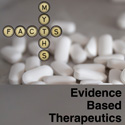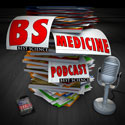Episode 27: COPD: Breathing Life into Effective (& some not) COPD Treatments
In episode 27, we examine the management of COPD Exacerbation and adjunctive treatments. We review the relatively good evidence for antibiotics and steroids in Exacerbations including the options in choice, dosing, and mode of administration. We briefly examination some of the other treatment options in chronic COPD with combination puffers, immunizations, theophyline, and home oxygen. We close by discussing the general use of methylxanthines (like chocolate) for overall well-being.
Show Notes
1) Vaccinations
“An annual influenza vaccination reduces morbidity and mortality from the disease by as much as 50% in the elderly and reduces the incidence of hospitalization by as much as 39% in patients with chronic respiratory conditions. The benefit of pneumococcal vaccine in COPD is less well established”
Can Respir J 2007;Vol 14 Suppl 5b-32b
Influenza vaccine
“It appears, from the limited number of studies performed, that inactivated vaccine reduces exacerbations in COPD patients”
Pneumococcal vaccine
“There is no evidence from randomised controlled trials that injectable pneumococcal vaccination in persons with COPD has a significant impact on morbidity or mortality
Can Respir J 2003;10 Suppl A:11A-65A Ann Intern Med. 2001;134:600-620.
3) Acute Exacerbation “Treatment of an exacerbation of COPD with oral or parenteral corticosteroids significantly reduces treatment failure and the need for additional medical treatment”
“This review shows that in COPD exacerbations with increased cough and sputum purulence antibiotics, regardless of choice, reduce the risk of short-term mortality by 77%, decrease the risk of treatment failure by 53% and the risk of sputum purulence by 44%; with a small increase in the risk of diarrhoea”
Can Respir J 2007;Vol 14 Suppl 5b-32b
4) Home Oxygen
Ann Intern Med. 2007;147:633-638 Ann Intern Med. 2007;147:639-653.
5) Theophylline
“This systematic review shows that orally administered theophylline improves lung function and levels of oxygen and carbon dioxide in the blood. However, there is limited data on its effect on symptoms, exercise capacity or quality of life. Despite being associated with increased side effects, particularly nausea, subjects preferred theophylline over placebo.”









